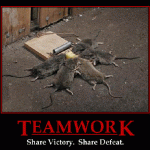Archive for the ‘Quality’ Category
Wednesday, February 10th, 2010
![images[2] images[2]](https://blog.kikscore.com/wp-content/uploads/2010/02/images2.jpg) You may have noticed a pattern here at KikScore where feedback and the question of when is a product ‘ready’ are hot topics. So, how do you define, measure, and enforce quality in a start up product? Once the product is ‘live’, how can you effectively support your product and react to customer issues and concerns? There are a few key software quality assurance guidelines to follow that apply to products of all shapes and sizes.
You may have noticed a pattern here at KikScore where feedback and the question of when is a product ‘ready’ are hot topics. So, how do you define, measure, and enforce quality in a start up product? Once the product is ‘live’, how can you effectively support your product and react to customer issues and concerns? There are a few key software quality assurance guidelines to follow that apply to products of all shapes and sizes.
During the development phase you must test, test and retest. Depending upon the complexity of the software being developed, this could be a short or lengthy venture. Testing in phases, as pieces of the application become available, is highly recommended. This allows you to not only find major issues early, but also helps ensure you aren’t building upon sub-par code as the product continues through the life-cycle. Also, find a means to track and report status on any and all issues found during the test cycles. A spreadsheet can work if you don’t have a bug tracking system and there are a few free/easy to use ones available.
Even if you had ample time to test everything you could think of, upon release to the general user community, they will find issues you never dreamed of. Once you are ‘live’, your team needs to gauge the severity of any issue that is uncovered or reported to assess the impact and allocate resource(s) accordingly to address it. This is critical in the case where there are limited development resources and you need to prioritize their work so as not to affect other focus growth areas.
Severity can be broken into 3 levels – this also gives the entire team a common terminology when discussing issues.
Severity 1
— Core functionality is not working.
— There is no available work-around to perform the requested action.
— Error messages are displayed.
Severity 2
— Basic functionality is in question.
— There is a work-around to gain access and perform the requested action.
— The system handles the situation gracefully, either with a general ‘logged out’ message or other user-friendly notification.
Severity 3
— General usability items.
— Application is functioning fine, but confusion is raised throughout the display or general system navigation.
Once you’ve qualified the issue, how do you support it through the process and keep the customer informed?
Let’s assume you have a Severity 1 – how do you deal with it? In a small start-up shop, where most of the team has day jobs, creating an on-call or support tier works wonders.
1. Create a weekly on-call support staff that rotates and consists of 2 resources per week.
On a weekly call (or other avenue that applies) — Identify the 2 on-call resources per 1 week interval
2. During the support week, the 2 resources on-call are responsible for researching issues reported and be point of contact for:
— responding to the customer(s) who reported the issue
— involving other team members as needed to escalate/resolve the issue(s)
3. Support resources are required to provide daily updates to the rest of the team on progress of reported issues.
4. Where a code change or update is required, the support resource(s) schedule a team call to outline next steps and expectations
5. If 4 happens, the entire team should discuss the response back to customer(s) on the fix.
The Golden Rule – If a customer found the issue and actively complains – always treat as Severity 1. Be open and honest with your customers surrounding errors that are found and get a fix released in a timely manner. This builds trust in not only your product and support but builds integrity into your brand. What is your quality cycle or lessons learned?
 Tweet This Post
Tweet This Post









![images[2] images[2]](https://blog.kikscore.com/wp-content/uploads/2010/02/images2.jpg) You may have noticed a pattern here at KikScore where
You may have noticed a pattern here at KikScore where